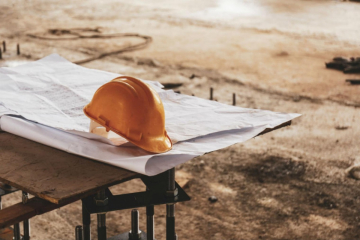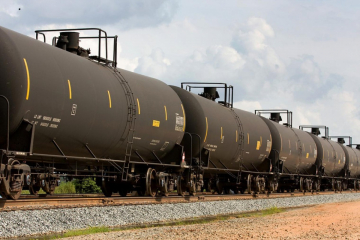There are exceptions to the rule when it comes to maintaining a Facility Response Plan. We examine what sensitive resources might be present near your facility, what that means for your planning, and what you might need instead.
The first blog in this two-part series provided an overview of Facility Response Plans (FRPs) and when they are required. Generally, if a facility stores over 1 million gallons of oil (petroleum and vegetable oils), an FRP is required. However, there are exceptions for facilities where it can be demonstrated that a catastrophic release would not impact a sensitive resource as defined by 40 CFR 112.
To provide context for new and existing facilities looking to better understand FRP requirements, we will examine which sensitive resources might be present, how Antea Group can help you determine whether your facility could impact them, and how modeling can help you have a more cost-effective response, no matter what type of plan your facility implements or whether you have FRP exceptions.
Determining Whether Sensitive Resources are Present
The National Oceanic and Atmospheric Administration issued a document entitled Guidance for Facility and Vessel Response Plans Fish and Wildlife and Sensitive Environments. Three of its appendices define sensitive environmental resources that, if potentially impacted, would trigger the need for an FRP.
Appendix I covers many of the sensitive resources we might expect would need to be protected, including wetlands, threatened and endangered species and their protected habitats, federal parks and sanctuaries, cultural resources, national forests, and others. Appendix II designates specific critical habitats and National Marine Sanctuaries. Appendix III contains a list of other specifically designated sensitive habitats, such as the Florida Keys and the St. Lawrence River. The resources in Appendix II and III are well-known and designated, which makes them easy to take into consideration during site modeling.
Some of the resources in Appendix I may not be as clear-cut. There are several resources that are more likely to be located near a facility than others (wetlands, cultural resources, etc.). To find out if these types of resources could be impacted, it is necessary to perform a field survey.
Modeling the Release
Flow diagrams from an FRP will often be estimated based on a site walk alone. We have found that the accuracy can vary widely, and unfortunately, some diagrams have been found to completely misrepresent the site flow.
To properly model a catastrophic release, it is necessary to conduct a site-specific topographical survey. Using the information garnered from the survey, the planning distance of a potential release is modeled pursuant to the model parameters and approach provided in 40 CFR Part 122 Appendix C Attachment C-III. The guidance provides four modeling scenarios, which may need to be combined depending on site features:
- Oil Transport on Moving Navigable Waters
- Oil Transport on Still Water
- Oil Transport on Tidal-Influence Areas
- Oil Transport Over Land
If you find yourself having to model any of the first three scenarios, your facility will be required to prepare an FRP. However, if you begin your analysis by modeling oil transport over land, your facility may not have the potential to impact any sensitive resources. The next question you’ll have to ask is whether sensitive resources exist within the proximity of the facility and if they would be affected by oils.
In general, when you can demonstrate that your facility’s release will not impact sensitive resources as defined by the regulation, then you can minimize your obligations by maintaining a Spill Prevention, Control, and Countermeasure (SPCC) plan instead.
Determining Your FRP Needs
Based on the results of the release model and the resources present nearby the facility, there are several potential outcomes.
When You Don't Need an FRP
There are reasons why an FRP may not be needed at your facility. Two FRP exceptions are:
No sensitive resources are present. If a survey of the area surrounding the facility indicates that there are no sensitive resources along any path that the release may flow through and cause substantial harm, there may not even be a need to model the release. This has been demonstrated in some areas that are uplands and distant from waterways or in dry, desert areas where no wetlands or drinking water intakes present.
However, care needs to be exercised even for these areas to be certain there are no resources present. Even in desert areas, wetlands may be present that are not easily recognized except by experts, drinking water resources could be underground, critical habitats may be present, and there may be preserved cultural resources.
No sensitive resources would be impacted. Although sensitive resources may be present near a facility, modeling may show that even in the event of a catastrophic release, none of these resources would be impacted. Releases may instead end up being diverted by local topography to areas that do not contain any resources and/or where the oil could be remediated and removed.
Better Understanding of Release Flow = Cost Savings
There may be some scenarios where the storing and use of oil would inevitably impact a sensitive resource. In this case, facilities may wonder if there would be any benefit to modeling the catastrophic release. As mentioned earlier, often the FRP flow diagrams are based on site walks rather than topographic data. In some cases, the preparations for oil release response end up being in the wrong place as a result. Formal FRP modeling can help you better prepare for a release and potentially save your facility from costly impacts of not having equipment in the right place.
Gather Support for Installing Engineering Controls
Beyond providing a better understanding of the catastrophic release scenario, modeling the release can also provide more detail or support for installing engineering controls that could prevent a significant impact on the environment, along with its associated cleanup costs.
Planning Ahead for Facility Placement and Design
Even in scenarios where an FRP may be needed, surveying your facility and the surrounding area, then following up those surveys by modeling and better understanding the potential release can bring value to your planning efforts. While modeling may not provide you with an exception from developing and maintaining an FRP, it would certainly focus your planning and make your response efforts more cost-effective.
The potential for a release should also be considered when planning for a new facility that might require an FRP. If the facility could be located in an area without sensitive resources present, the FRP does not need to be developed and the annual FRP exercise doesn’t need to be carried out, saving your company considerable cost. A relatively inexpensive survey for wetlands, drinking water intakes, critical habitats, and cultural resources conducted during facility planning can pay for itself during the operational life of the facility.
No matter what kind of plan is necessary for your facility, understanding potential spill scenarios is a must for your business to ensure a timely, proactive, and affordable response.
Antea Group can help you plan for all of these scenarios. Contact us today to get started.
Want more news and insights like this?
Sign up for our monthly e-newsletter, The New Leaf. Our goal is to keep you updated, educated, and even a bit entertained as it relates to all things EHS and sustainability.
Have any questions?
Contact us to discuss your environment, health, safety and sustainability needs today.




